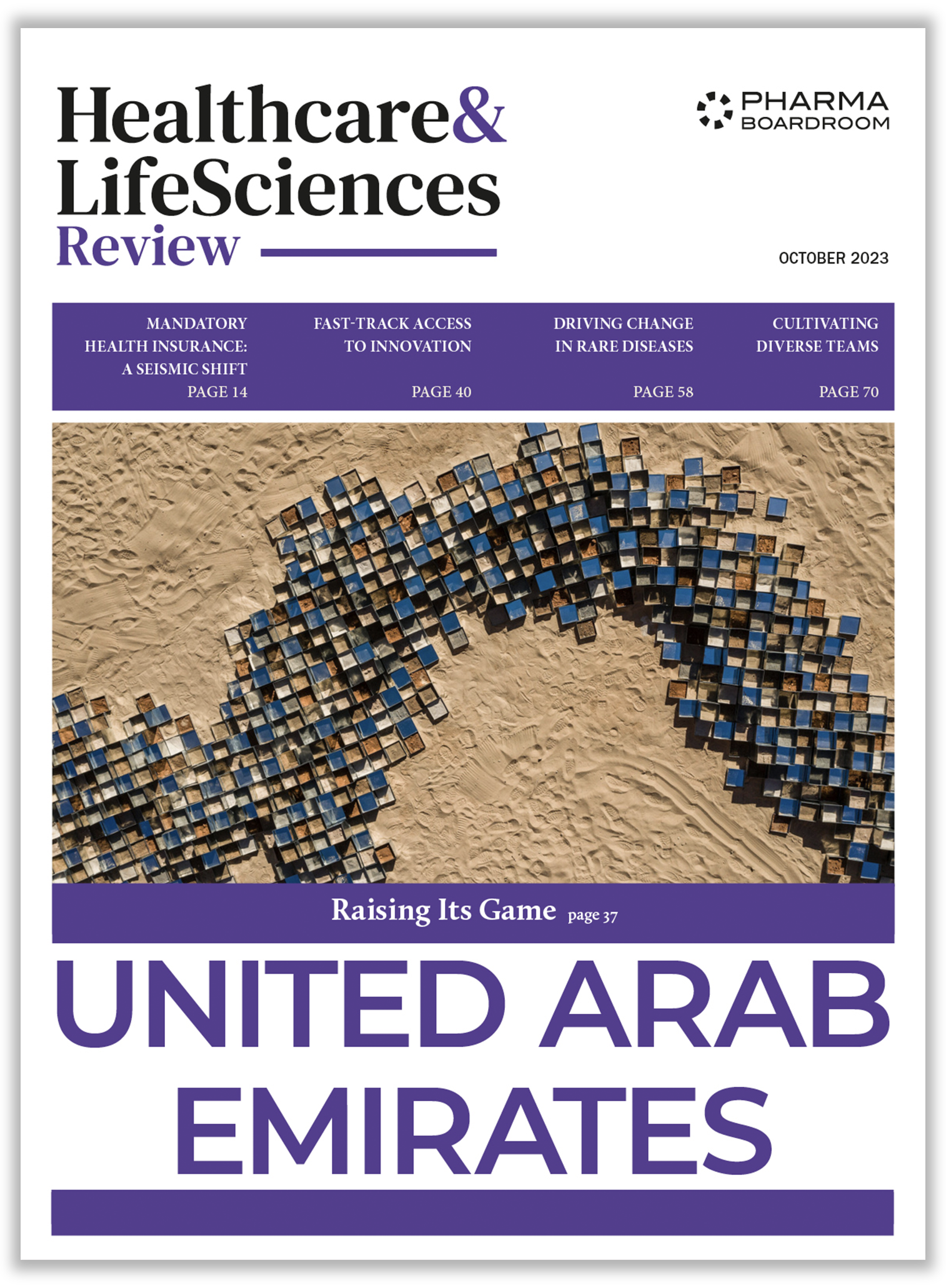Ricky Chiu of Phase Scientific International discusses exciting new technological developments in the diagnostic field and the benefits of being based in Hong Kong.
Having founded PHASE Scientific in America in 2012, what was the motive behind moving its operations to Asia, and why Hong Kong specifically?
There are two main reasons for the move. One is Hong Kong’s economic prowess. However, the bigger incentive is based on my vision for the technology. The goal I have for the future is to significantly change the healthcare system as we know it. How we manage health right now focuses mainly on treatment for many diseases and conditions that are ultimately preventable. This shift towards preventative healthcare would ease the economic burden faced by the government and insurance companies, resulting in better wellbeing and health for everyone.
I want to push forward this idea that every individual has the opportunity to understand their own health, and make wise and informed choices about their bodies, for example, whether they need to take more exercise, consume supplements or visit their doctor. This would pave the way for earlier diagnosis of diseases, so treatments can be implemented faster at a more effective rate, thus helping to achieve better patient welfare.
One of the main obstacles preventing consumers from being in control of their own wellbeing is technology. Without good diagnostic technology, it is difficult to understand your own health on a real-time basis, which is crucial. This is where PHASE Scientific comes into play. What we believe is our exciting technologies can transform and advance existing diagnostic tools.
What is the main focus of your technologies?
Currently, the diagnostic landscape has two extremes. On one side, we have the rapid point-of-care tests, which are inexpensive, easy to use and fast. However, they are not accurate or sensitive enough, and their applications are limited to pregnancy tests or blood glucose level tests. On the other side, we have laboratory assays, which although more accurate than the former, are expensive, take a long time to use and require the presence of well-trained technicians.
Our technology is very simple but effective, consisting of a sample collection and preparation method to, firstly, detect whether the target of interest is present or not, and secondly, to increase the concentration of the target of interest regardless of its quantity so that it becomes easier to detect. The uniqueness of our technology is that it can be applied to both rapid point-of-care tests and laboratory assays to improve their weaknesses.
An analogy I like to use is a cup of water containing five grains of salt. Drinking this water, the tongue cannot taste the salt because the concentration of the salt in the water is too low. Therefore, instead of altering the function of the tongue, which might disrupt its current advantages, we change the concentration of the water to one drop containing five grains of salt. Now, the tongue is able to taste the salt.
We apply our technology in two main areas: Firstly, we have our point-of-care tests, in which our main focus is the detection of sexually transmitted diseases, tooth decay, and malaria. Secondly, we are focusing on improving liquid biopsies by enhancing the quality of samples prior to performing the diagnostic test.
Finally, we aim to complete the value chain by looking at big data. Since our point-of-care tests can be done by almost anyone at their convenience, this can potentially generate a lot of data. This data can be utilized to give a better assessment of the test taker’s health situation, and ultimately offer recommendations for treatment, which contributes further to my vision to encourage a change in the healthcare system.
What are the main timelines for your product launches?
For our point-of-care tests and sample preparation products for liquid biopsies, it takes a long time to bring them to market due to rigorous regulatory approval processes. Previously, the company was devoted to developing the core technology. Now that that is done, we are looking into how best to apply this technology, which is very versatile. Our technology can be envisioned as a computer chip which can be embedded in many different devices. Where we have a strong understanding of the market, we can continue to develop products in these areas. However, for other areas that are new to us, we can partner with other diagnostic companies and develop new products together, or out-license our technologies to them.
Furthermore, partnering with other companies benefits PHASE Scientific when it comes to the regulatory process. Going through the regulation process alone as a small start-up can be tough, and because we are still at the infancy stage, it makes more sense to collaborate, providing building blocks and universal solutions to others.
Looking at our technology, we can open a lot of opportunities for other businesses, because, while we are disruptive, we are not competing with other diagnostic companies. We can be seen as collaborators, paving the way for patients to understand their health in an easy, convenient manner and across many different diagnostic tests for different diseases.
Moreover, the application of our technology is not restricted to the medical industry and we can branch out to cover the whole healthcare sphere, including the environmental and animal care sectors also.
What are the main opportunities that present themselves looking at the Greater Bay Area Initiative?
Currently, we are still waiting for further information regarding the initiative. In general, many stakeholders in Hong Kong understand the determination of the Central Government in developing the Greater Bay Area and the focus on creating an innovation and biotechnology hub, with Hong Kong at the center. Therefore, the timing of PHASE Scientific’s move to Hong Kong is perfect, and our geographical positioning can capitalize on this vision that is shared by so many. The biggest benefit we have in this location is fundraising, mainly due to our close proximity to funding sources in both Hong Kong and China.
However, there are limitations to our location, that being finding the right talent and retaining experienced people. Previously, the company was very R&D driven, but now that we are expanding, we also need sales and marketing, corporate development, legal and finance experts. Hong Kong has traditionally had a financial mindset, so I feel that we will need to tap into mainland China in search of this much-needed talent.
Attracting the best talent stems from the alignment of interests, like everything else in the business sphere. Companies need to provide good incentives and a strong vision of a great future not only for the company but also for the local environment. The Greater Bay Area concept understands this vision and has coalesced the strengths of different regions with limited borders, which is incredible.
What are the key target markets for PHASE Scientific?
We will begin sales first in Hong Kong, as this is our home turf and playground. Hong Kong is a small but highly densely-populated country, which paves the way for an effective marketing campaign. It is here that we want to prove that our concept works. I want to highlight to our investors that, with a brand-new entrepreneur at the helm, we can be successful in this market. Also, this would offer a huge morale boost internally.
Expanding into the Greater Bay Area would be a next step for the company as well, because of its dense population.
By the end of 2018, we aim to have our point-of-care products gain the CE Mark, which will open the European markets.
Our technology is supported by the US government, which suggests an interest in our products. Unfortunately, getting US FDA approvals are extremely time-consuming and expensive. However, we aim to complete this process for our first product in 2019 and push forward our vision of prevention.
What have been the main ways in which you have raised funding for the company?
We have been able to raise almost USD 10 million, most of which from US government institutions, the Bill and Melinda Gates Foundation, and individual investors such as Dr. Joseph Tam, founder, and Chairman of DiagCor. Dr. Tam is one of our earliest investors. He is someone who I highly respect and one of the main reasons why I ended up relocating the business to Hong Kong, mainly because of his vision for the country and his understanding of the landscape.
What are your strategic priorities for the future development of PHASE Scientific?
We have identified the three key areas we wish to focus on. Looking at the point-of-care tests, it is essential that they remain non-invasive whilst concentrating on infectious diseases. I want to develop highly accessible tests which are affordable for everyone with effectiveness as the main benefit. We also want to respond to the consumer’s desire for home-based tests, which helps them avoid the potential for embarrassment if they have to go to the clinic to be tested, especially for sexually-transmitted diseases.
As far as I am aware, current point-of-care tests are serving only a small portion of the market. Currently, there are only two such tests which are used regularly – pregnancy tests and glucose sugar level tests. So the potential to develop this area further is untapped and there is a huge unmet need for the healthcare sector.
As a new entrepreneur, what is your leadership style?
Our team is young, but we are accompanied by experienced mentors. Our top management comes from established multinationals with tremendous expertise. With this young talent, we benefit from a lot of energy, but we are not arrogant in thinking we can do everything by ourselves. Our mentors help us navigate down the right path and make the most of our strengths.
As a leader, I aim to be very transparent and open. This can be demonstrated by the open working space we have in the office. Although we are in a transition phase and setting up new offices in Hong Kong, I will ensure that the culture we have now set a precedent for the company and we hope to be able to maximize the synergies across the different regions we operate in.
On a more personal note, what was the inspiration behind becoming an entrepreneur and starting your own business?
My main experiences in this line of work stemmed from the opportunity of working at BMC, a small company whose founder and president had an exceptional amount of experience and knowledge. This is where I came to understand the structure of a company. Moreover, my time at the University of California, Los Angeles (UCLA) showed me that there was a need to expand point-of-care technologies as an effective and efficient tool with better accuracy. As my vision is to make these tools as accessible as possible, I believe that if I had remained in academia, I would never have been able to reach that many people. Hence my decision to commercialize my idea. The reality is that to push a product into the market, although many academic and research institutions have good intentions, ultimately you need to have funding in order to advance the development of technology.
My main piece of advice to anyone looking to take the first steps and become an entrepreneur is to develop a global sense and study abroad. I appreciate the experiences I gained studying abroad and without that opportunity, I would not be where I am today.







